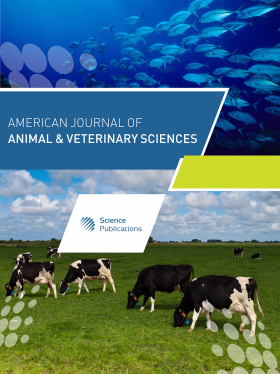The Polarity of Organic Solvents in Coriander Seed Powder (Coriandrum Sativum) Extract is Dependent on their Content of Beta-Carotene, Total Phenolics, Flavonoids, Antioxidants, and Antibacterial Properties
- 1 Department of Animal Husbandry, Faculty of Animal Science, Universitas Jambi, Indonesia
- 2 Department of Research Center for Vaccine and Drugs Development, National Research and Innovation Agency, Indonesia
Abstract
Attempts to develop alternative antibiotics from herbal plants, especially those originating from spice plants that contain active compounds, are crucial to improve livestock health and support the growth of livestock to reach their genetic potential. This study aims to examine the effects of utilizing different solvent polarities on the solubility of coriander seed secondary metabolite chemicals, which are associated with antibacterial and antioxidant properties. Six types of bacteria used were Escherichia coli, Salmonella SP, Pseudomonas aeruginosa, Staphylococcus aureus, Enterococcus faecalis, and Bacillus subtilis. Using the Step Gradient Polarity (SGP) method, 600 grams of coriander seed powder were macerated gradually using n-hexane, ethyl acetate, and methanol. The result of the maceration process from each fraction was concentrated using a rotary evaporator to obtain the weight of each fraction. A yellowish brown methanol fraction weighed 62.574 grams, a dark yellow-orange ethyl acetate fraction weighed 80.167 grams, and a dark yellow-orange n-hexane fraction weighed 96.623 grams. Oleic acid and 9-Octadecenoic acid (Z)-, 2-hydroxy-1- (hydroxymethyl) ethyl ester were the primary secondary metabolite components in the methanol fraction, with retention times of 43.221 and 53.961 minutes, respectively. Meanwhile, the main secondary metabolite compounds in the ethyl acetate extract were linalool, with a retention time of 13.076 minutes, and oleic acid, with a retention time of 43.221 minutes. Antioxidant activity from ethyl acetate was better than methanol fraction, and tests of its antibacterial activity revealed a comparatively strong inhibition zone for the test bacteria's development. The ability of each fraction, which can be ranked in order of strength in inhibiting bacterial growth using the minimum concentration, was ethyl acetate >methanol >n-hexane. The discovery of active fractions of coriander seeds as antioxidants and antibacterial agents can positively influence human and livestock health.
DOI: https://doi.org/10.3844/ajavsp.2025.274.286

- 26 Views
- 8 Downloads
- 0 Citations
Download
Keywords
- Coriander Seed
- Antioxidant
- Antibacterial
- Secondary Metabolite
- Organic Solvent
